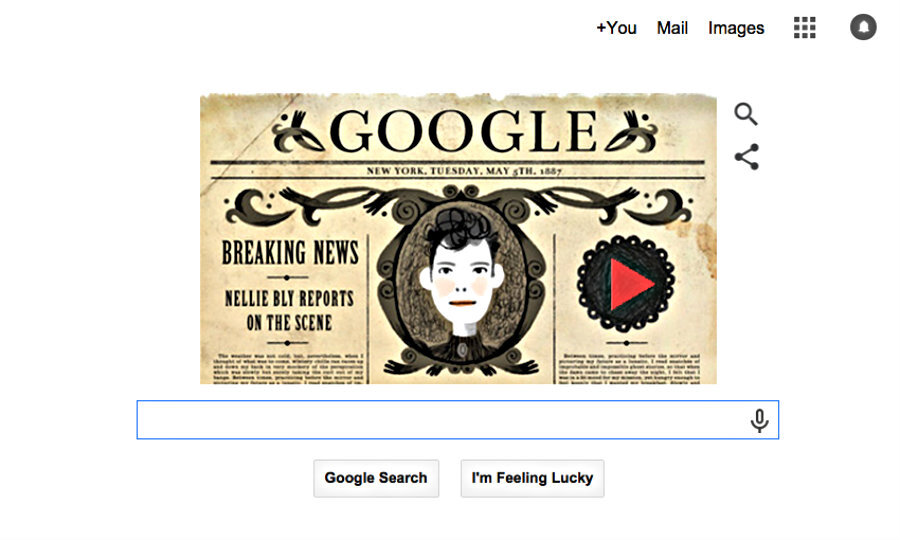Why Nellie Bly is worth an awesome, original song
Loading...
Journalist, human rights activist, entrepreneur – Nellie Bly, to whom Tuesday’s musical Google Doodle is a tribute, was all three and more.
Born Elizabeth Cochran 151 years ago on May 5, Ms. Bly built a career around defending the poor and exposing the corrupt. Her remarkable achievements as a journalist and activist have led Google to recruit Karen O, lead singer of the Yeah Yeah Yeahs, to pen the first original Google Doodle song in her name.
“Someone’s gotta stand up and tell ‘em what a girl is good for,” the indie rocker, real name Karen Lee Orzolek, sings in the opening lines of “Oh Nellie.” “We gotta speak up for the ones who’ve been told to shut up.”
Indeed, Bly began her journalism career defending the underdog: She wrote a scathing response to an article in The Pittsburgh Dispatch that denounced the working woman and claimed that women belonged in the home. Bly’s letter caught the eye of the Dispatch’s managing editor, who offered her a position at the paper.
At the Dispatch, she took the pen name Nellie Bly and built a reputation as an investigative reporter, exposing conditions in slums and sweatshops.
In 1887, she moved to New York City, where she started working at the New York World, owned by Joseph Pulitzer. There, she wrote the story that would make her famous: An expose that involved Bly posing as a mental patient for 10 days in order to detail beatings, ice-cold baths, and other abuses at the mental institution on Blackwell’s Island (now Roosevelt Island).
The story spurred an investigation of the asylum and reforms to the healthcare system. Bly went on to write more stories from the perspective of the poor and disenfranchised, and penned editorials exposing corruption in government.
In 1889, Bly decided to take on a different kind of challenge, and set off to break the record set by Phileas Fogg, the fictional character in Jules Verne’s “Around the World in 80 Days.” She left New York by ship in November and returned 72 days later.
In her tribute, Ms. Orzolek highlights Bly’s pioneering life and work, and encourages others to strive for the same. “Oh, Nellie, take us all around the world with you,” she croons. “We want to make something of ourselves too.”
Bly put on her entrepreneur’s hat in the early 1900s, when she helped develop the modern 55-gallon oil drum. By then, Bly had married industrialist Robert Seaman, who owned the Iron Clad Manufacturing Company. When Mr. Seaman died in 1904, Bly took over the business.
With the help of Iron Clad employee and machinist Henry Wehrhahn, Bly secured the patents for the modern steel barrel.
“I am the only manufacturer in the country who can produce a certain type of steel barrel for which there is an immense demand at present, for the transportation of oil, gasoline, and other liquids,” Bly said at the time, according to the American Oil and Gas Historical Society.
Bly died of pneumonia in 1922, but not before resuming her work as a reporter, this time for the New York Journal.
According to CNN, Kate Wu, who designed the art for Tuesday’s stop-motion Google Doodle, said of Bly’s career: “She gave women a space in newspapers when they were generally preserved for men's perspectives. She gave women a voice in current events and media and dared to do a lot of things that women weren't generally allowed to do.”








